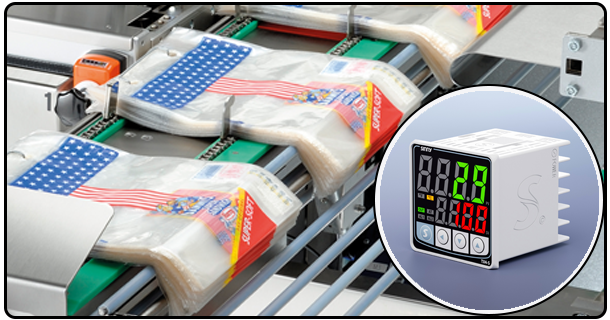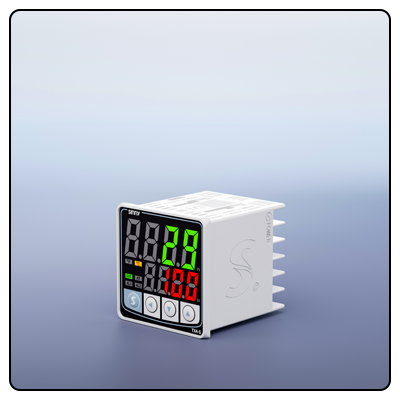How to Select Temperature Sensors for Your Temperature Controller
Learn the essential steps of selecting temperature controller sensors so you can ensure accurate and reliable temperature regulation. Understand important considerations, including types of sensors available as well as any industry-specific ones to get maximum performance out of your temperature controller sensors.
1. Introduction
When it comes to temperature regulation, selecting the ideal sensors is of critical importance in terms of accuracy and reliable results. Your decision impacts performance, efficiency, longevity of the temperature system; in this article we outline key considerations when selecting temperature sensors as well as pairing sensors with controllers for maximum success.
2. Understanding Temperature Sensors
Temperature sensors convert temperature data to signals usable by temperature controllers for proper maintenance, making their use an essential element in maintaining precise levels in various circumstances and applications. They play an essential part in keeping temperatures consistent across applications while helping ensure smooth operations overall.
Temperature Sensor Types: There are various kinds of temperature sensors suitable for various uses, with thermocouples, RTDs (Resistance Temperature Detectors), thermistors and infrared sensors being the main varieties available. Knowing more about them will assist with choosing one best-suited to meet specific requirements.
3. Key Considerations (TeatrulTemperature Range )
It is crucial for accurate temperature measurements that any sensor meets your application's required temperature range; different sensors have various temperature restrictions that must be chosen accordingly when making this choice. Selecting one which meets these specifications is of utmost importance when purchasing any sensor for precise readings.
Accuracy and Precision: Sensor accuracy and precision are integral parts of reliable temperature regulation. High-accuracy sensors offer more precise readings, making them suitable for applications requiring stringent temperature regulation.
Response Time of Sensors: Response times measure how fast sensors recognize and adapt to temperature variations. Fast response times make sensors especially valuable in applications where rapid fluctuations take place.
Durability and Stability: Make sure that the sensor can withstand its operating environment and continue providing performance over time, considering factors like chemicals, humidity levels and mechanical strain which could reduce its durability and stability over time.
4. Types of Temperature Sensors
Thermocouples: Widely utilized due to their wide temperature range and durability, thermocouples have long been utilized as reliable temperature measurement sensors in challenging environments; making them suitable for high-temperature measurements when compared with sensors with similar accuracy rating but potentially lower accuracy ratings such as alternatives.
RTDs (Resistance Temperature Detectors): RTDs provide high accuracy and stability, making them suitable for applications requiring precise temperature readings such as industrial processes or laboratory settings. Although more costly than thermocouples, RTDs deliver greater performance.
Thermistors: Thermistors provide quick responses to temperature variations and quick response times, making them suitable for applications which need accurate temperature readings quickly and with fast responses times. Unfortunately, their limited temperature range means they might not work effectively in extreme temperatures.
Infrared Sensors: Infrared sensors measure temperature by detecting infrared radiation emitted by objects, making them suitable for applications where direct temperature measurement would not be possible or needed, such as moving objects and hazardous environments where direct measurement would not be suitable or required. They offer quick and accurate readings but may be affected by environmental factors like dust or moisture which might alter reading accuracy.
5. Selecting Sensors That Compat with Temperature Controllers
Identifying compatible temperature measurements and controls is of utmost importance in accurate temperature measurements; double check that both sensors can work harmoniously together before making your selections.
Calibration: Calibrating sensors with temperature controllers is critical to accurate readings, as it involves making comparisons against an established standard and making adjustments so as to maintain alignment over time. Regular calibration ensures reliable measurements by the sensor/temperature controller combination over time.
Integration: Integrating sensors and temperature controllers requires careful installation and configuration; you should follow manufacturer specifications when connecting your sensor to its controller and configuring for maximum performance. Proper integration ensures accurate temperature regulation as well as safe operations.
6. Industry-Specific Considerations
Manufacturing: When selecting sensors for high temperature processes and harsh environments, thermocouples and RTDs tend to be preferred due to their durability and accuracy. Make sure the chosen sensor can withstand your operating conditions while offering accurate measurements.
Food and Beverage: Sensors used in the food and beverage industries must meet stringent hygiene and safety regulations, with RTDs or thermomistors offering fast response times with accurate readings; to ensure long-term durability of their sensors for cleaning processes like sterilization.
Pharmaceuticals: Pharmaceutical companies require precise temperature regulation during drug production, which RTD sensors offer in terms of maximum precision and consistency to comply with regulatory standards for accurate measurements.
HVAC Systems: Selecting sensors that promote energy efficiency and indoor air quality is of great significance in HVAC systems, such as thermosistors or infrared sensors with quick response times and noncontact measurement capabilities - such as thermosistors or infrareds with non-contact temperature regulation as well as accurate readings that deliver precise temperature regulation with reduced wasteful resource use. Selecting among them offers optimal temperature regulation without wasteful consumption of resources.
7. Advanced Features and Technologies
Sensors with advanced features, like self-calibration, diagnostics and communication abilities are the perfect combination of functionality for complex environments that demand accurate measurement with easy integration into complex ecosystems. You should invest in them for greater performance and integration ease.
Wireless Sensors: Wireless sensors offer remote monitoring and control without the hassles associated with wiring installations, making installation much faster and simpler. Wireless sensors make an excellent addition for applications requiring mobility or remote access.
Data Logging and Analysis: Temperature sensors equipped with data logging features can store temperature readings over time and analyze this data to spot trends, diagnose issues, optimize processes or increase system efficiencies and effectiveness. With such sensors installed in your temperature control system, performance can increase greatly while efficiency levels skyrocket exponentially - helping optimize both its overall effectiveness and its overall efficiency levels overall.
8. Conclusion
Finding accurate and reliable temperature sensors for your temperature controller is vital in order to achieve accurate temperature regulation. When making this selection, take into account factors like range, accuracy, response time and durability when choosing an ideal sensor that suits your application needs. Selecting ones compatible with temperature management systems as well as having advanced features may further optimize their performance; consulting professionals or staying abreast with new tech may assist in making informed decisions with optimal outcomes in mind.
- How to Upgrade Your Temperature Control System
- How to Achieve Accurate Temperature Control in Your Processes: Tips & Techniques























